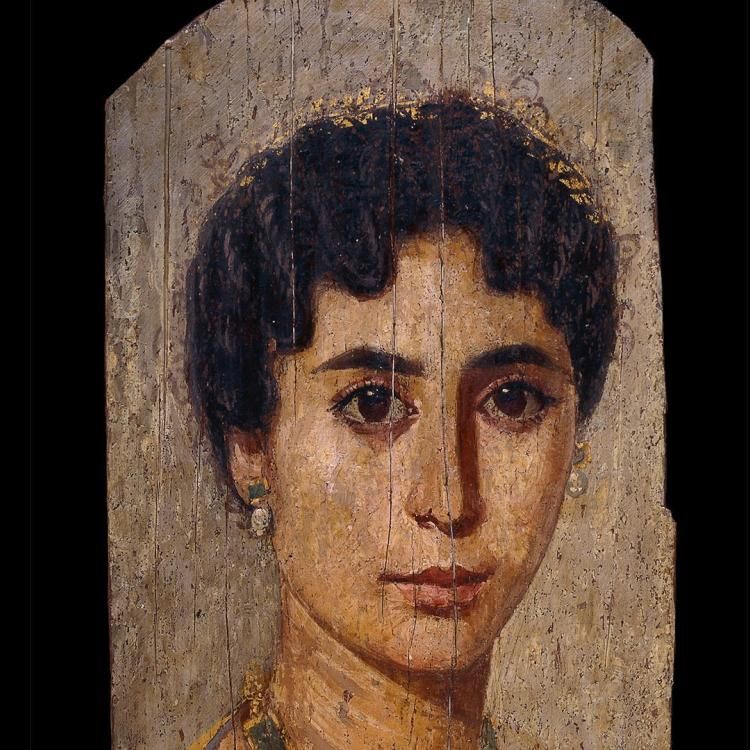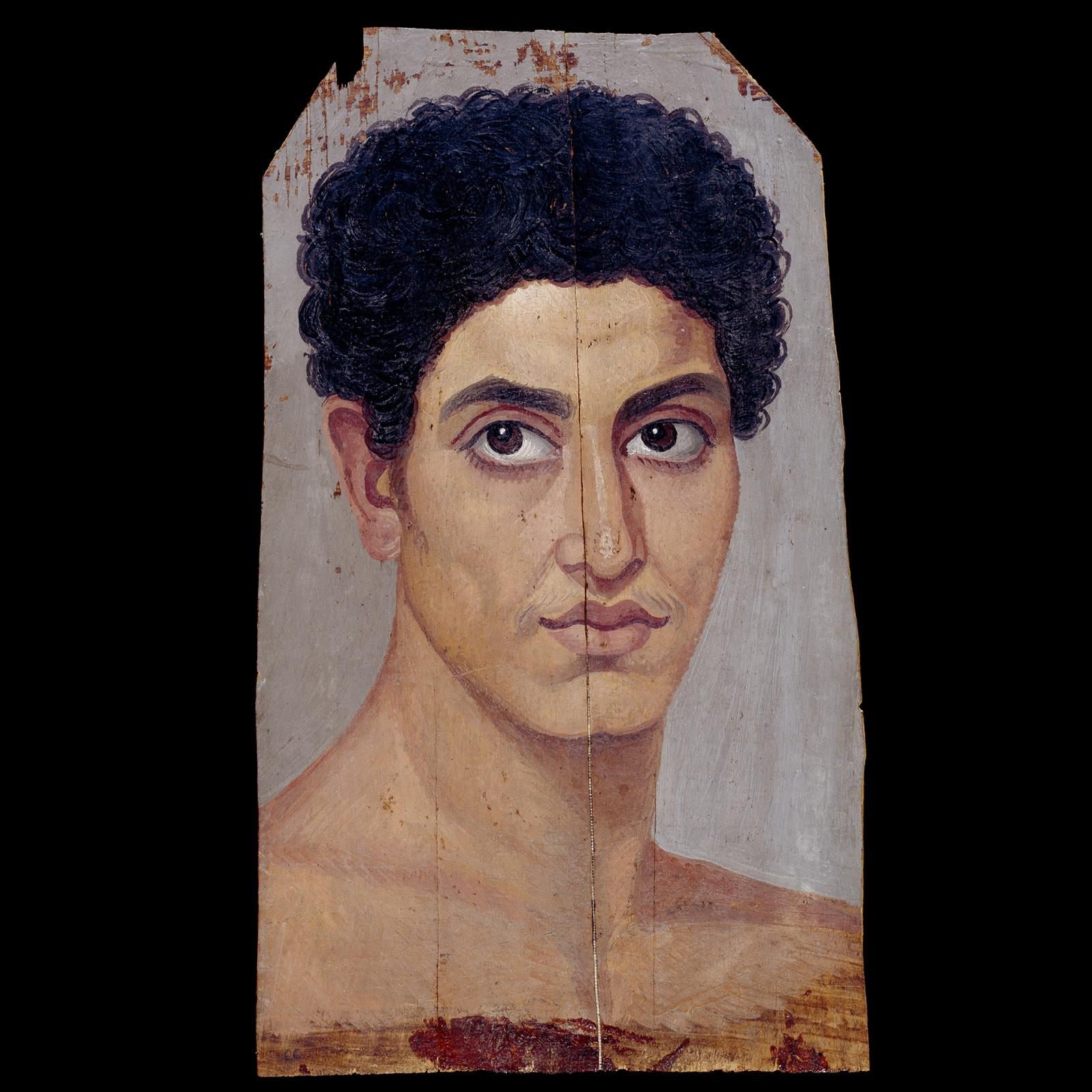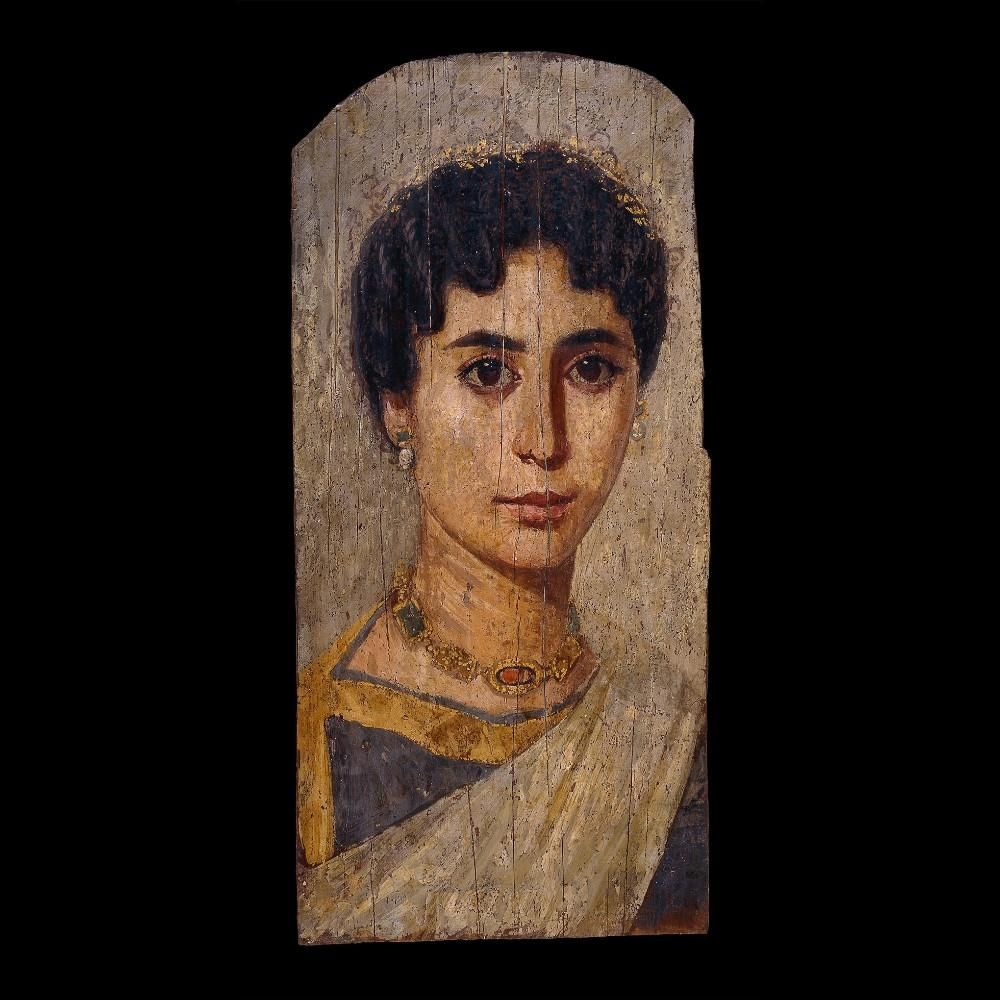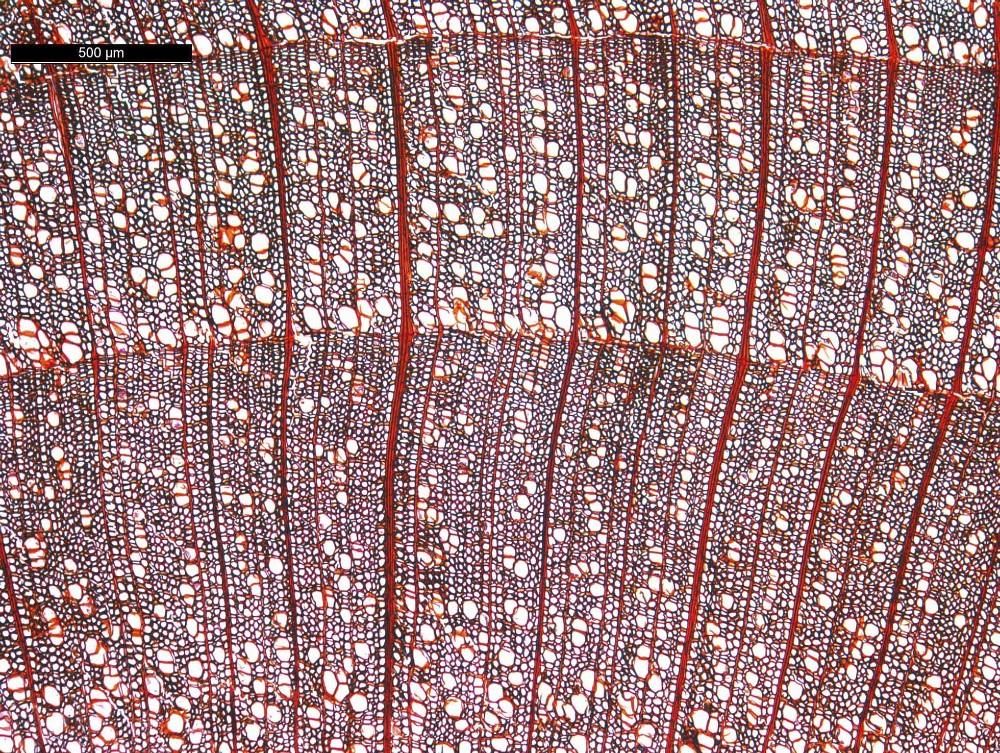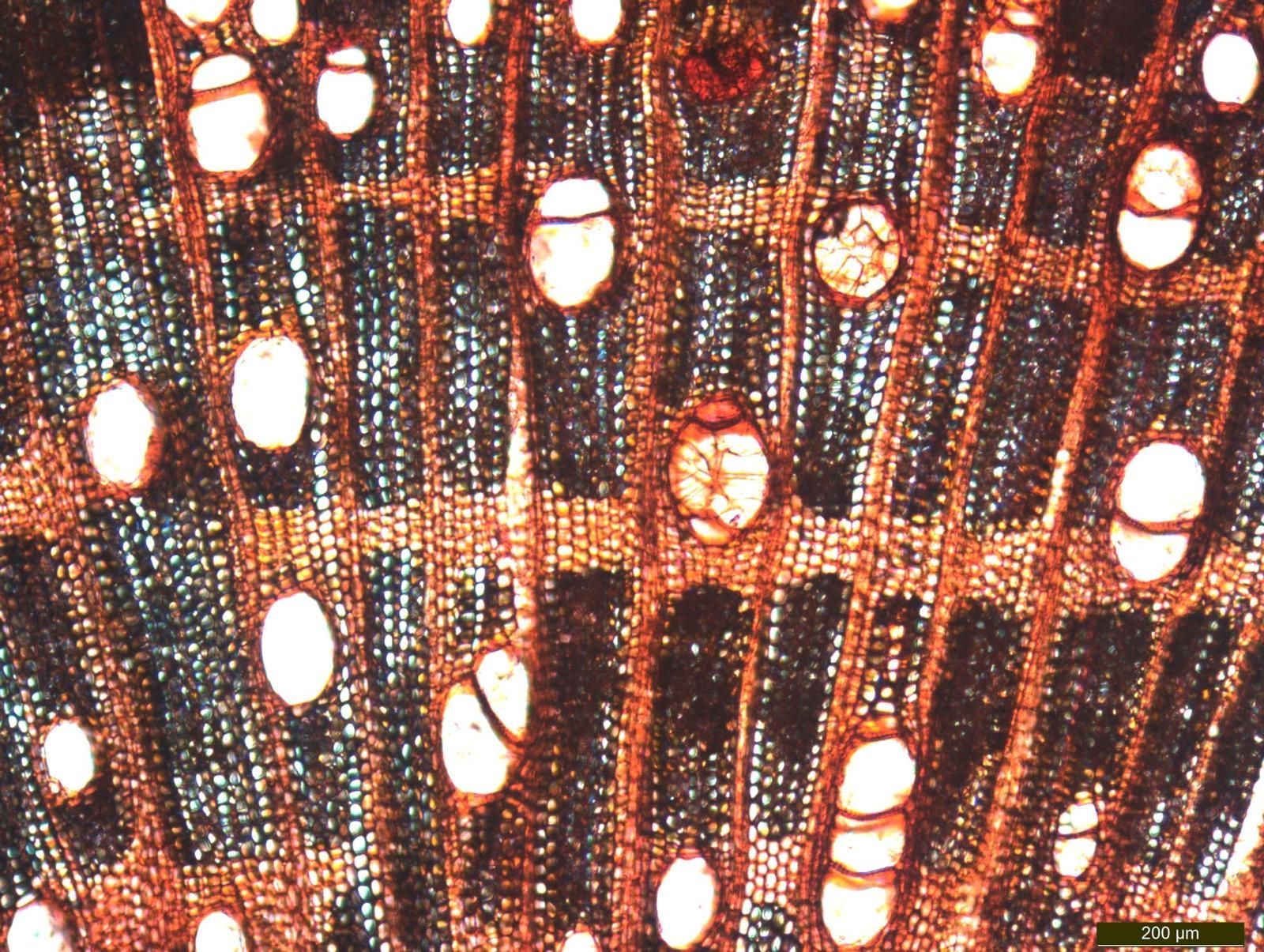Senior scientist Caroline Cartwright explores how these fascinating objects were made, and what they can tell us about the people they portray.
Depicting the dead: ancient Egyptian mummy portraits
In the 1990s the British Museum hosted an extraordinary exhibition, titled Ancient faces: mummy portraits from Roman Egypt. This marked the start of my scientific research into these iconic objects. Since then, an international collaboration was established at the Getty Museum in Los Angeles, Ancient Panel Painting; Examination, Analysis and Research (APPEAR), to expand our understanding of mummy portrait technology and materials. The British Museum has played an important part in the APPEAR project from the outset, with 35 partner institutions collaborating from around the world.
But what are mummy portraits and why are they important? After the Battle of Actium in 31 BC, Egypt became part of the Roman Empire and realistic paintings of people's faces on wooden panels – 'mummy portraits' – became the new trend for burials. These are very different from the stylised faces on decorated wooden coffins that had long been traditional in Egypt. It's fascinating that, although these mummy portraits became very popular in the first to third centuries AD in Egypt, people there still mummified human bodies as they had always done, burying them in sealed tombs. Two traditions were fused: the old and the new. The mummy portrait was secured in linen wrappings or in a cartonnage (layers of linen mixed with plaster) and placed over the face of the underlying mummy.
What's really amazing about the mummy portraits is that they are so life-like. I vividly remember one occasion at the British Museum when I was about to start a lunchtime gallery talk on mummy portraits. A girl about five years old ran towards me, pointing at the portraits, excitedly calling to her mother: 'mummy – look – real people'. I couldn't have planned a sweeter gallery talk introduction!
Much has been written about the different styles used in these portraits. Some are very realistic, others more freestyle. The women, particularly, are shown with hairstyles, clothes and jewellery reflecting Roman and Greek fashions typical of the time. Many of the people shown in the mummy portraits have been painted in a similar way to those seen on wall-paintings in Italy, for example in Pompeii.
Like my colleagues, I wanted to know how, where and why these portraits were created, and what kinds of materials were used to make them. Through scientific research, some of these questions have been answered, but as science is always developing new methods for analysis, it is intriguing to know there are more answers to find. Some years ago British Museum colleagues carried out CT scans of certain mummies with associated mummy portraits partly to see whether the mummified body could be linked to the person in the portrait. You can see their results on Collection online – but that would be a blog in its own right!
I am a wood scientist in the Department of Scientific Research at the British Museum. An important part of my job is to identify the different types of wood that people have chosen for objects, including mummy portraits. I do this by examining and imaging microscopic features in wood structure (such as those shown above), using scanning electron microscopes and comparing them with reference sections of known woods (shown below) using a biological optical microscope. I was surprised by the results of 180 wood identifications I have done so far on mummy portraits in Museum and gallery collections around the world – 70 percent used imported lime tree wood. This has been a major breakthrough in mummy portrait research.
Why? Lime trees are not native to Egypt, and lime tree wood was not imported into Egypt for use before the fashion for mummy portraits.
So why was lime wood so popular for mummy portraits? It is a quality wood, excellent for carving. Carpenters could cut thin planks, which might be steam-bent to a slight curve so that the painted portrait could be placed snugly over the face of the mummy. It may be that Greek and Roman carpenters, knowing about the great properties of lime wood, first produced portrait panels for use in Europe. We just don't know, because the preservation of ancient wood in Europe generally is very rare, nowhere near as good as wood from the sealed Egyptian tombs.
In addition to 70 percent of mummy portraits being lime wood, I found 10 percent used other woods not from Egypt – oak, fir and yew from Europe, and cedar from Lebanon. In total, that's 80 percent of mummy portraits made on non-Egyptian woods. I wonder whether this means that most panels were actually crafted in Europe and brought to Egypt to paint the person shown.
Before the Roman period, cedar wood from Lebanon was imported into Egypt for high-status coffins, but in these earlier periods most coffins used local Egyptian woods such as fig (shown above), tamarisk, acacia and sidr (Christ's thorn). Only 20 percent of Roman period mummy portraits were made on native Egyptian woods. Was there a cost issue for this minority? Perhaps some people could not afford imported lime wood?
Actually it was probably something more complex. It is possible that some portraits were intended to be displayed in houses before being used for burial. If that is true, not all portraits needed to be on thin lime wood panels. Mummy portrait panels that were made using imported oak, fir and yew wood, as well as those using local Egyptian woods, are much thicker and flatter than those on lime wood. Could these have been on domestic display first? There is a curious example in the British Museum – a small framed portrait made of local fig wood with attached fibre cords. This one, however, may only have been for a wall display. It is difficult to imagine how it could have been placed in cartonnage over a mummy.
I would like to mention scientist Joanne Dyer and conservator Nicola Newman who have made an important contribution to mummy portrait research through the use of multispectral imaging (MSI) techniques. Under different wavelengths of illumination MSI can be used to visualise the materials used in painting the portraits, including Egyptian blue, madder, organic binders and coatings. Sets of multispectral images often act as 'maps' that highlight particular properties, allowing the mummy portraits to be viewed in a new way and to be compared with one another. I hope they will write a future blog on MSI applied to mummy portrait research, as it is a fascinating and highly visual topic.
Find out more about the inspirational work of our Scientific Research and Collection Care departments.
Explore rooms 62 and 63 (The Roxie Walker Galleries), where these fascinating objects are on display.
Discover more about our research in this Getty Publications APPEAR Project publication.

